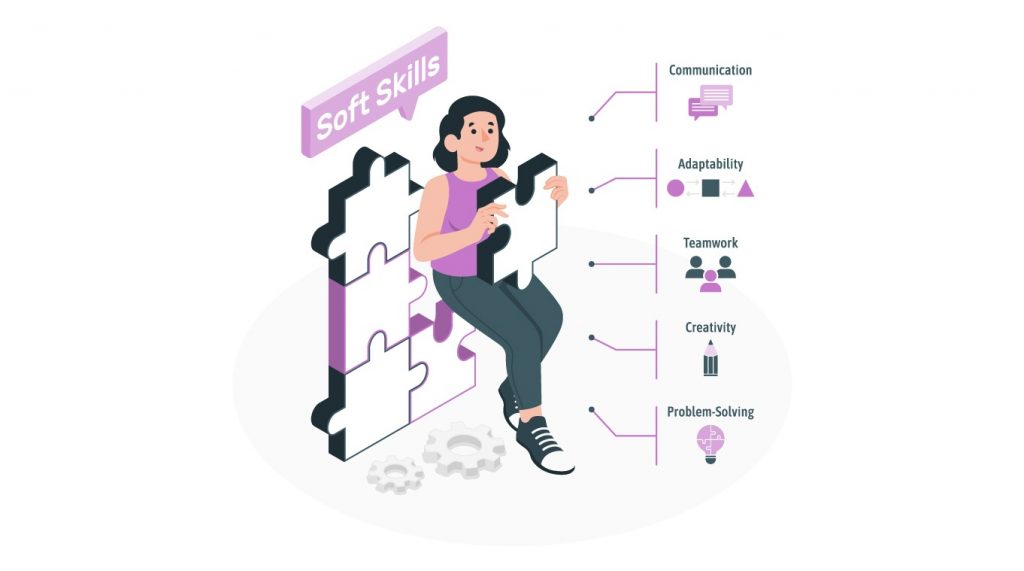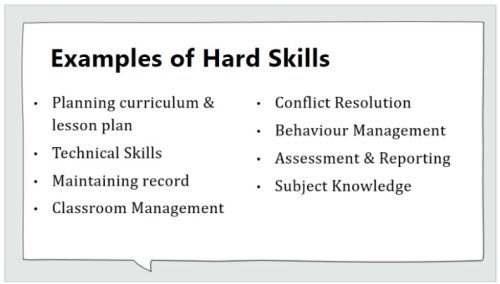What makes an exceptional teacher? Is it the depth of their knowledge, or perhaps something more? In today’s dynamic educational landscape, the qualities of a good teacher extend far beyond traditional teaching metrics. They involve empathy, adaptability, and a passion for fostering inclusive environments where every student feels valued.
Math & ELA | PreK To Grade 5
Kids see fun.
You see real learning outcomes.
Watch your kids fall in love with math & reading through our scientifically designed curriculum.
Parents, try for free Teachers, use for free
Today, being a great teacher isn’t just about knowing your subject inside out. It’s about connecting with your students, embracing technology, and being adaptable. This blog aims to uncover what makes a truly good teacher. We’ll explore the must-have qualities, the soft skills that make a difference, and the hard skills essential in today’s classrooms.
So, let’s dive into what it takes to not just teach but to leave a mark on the future.
12 Best Qualities of a Good Teacher
1. Empathy and Compassion
One of the most vital teacher qualities is the ability to understand and connect with students on a personal level. Empathy and compassion involve recognizing each student’s unique challenges and needs, whether they’re struggling academically, socially, or personally. A teacher can demonstrate this by listening to students’ concerns, offering support, and adapting lessons to include diverse perspectives.
For example, a teacher might notice a student’s interest in a particular topic and incorporate it into the curriculum, making learning more relevant and engaging for that individual.
2. Strong Communication Skills
Effective teaching is rooted in clear and concise communication. This good teacher trait is about more than just delivering content; it’s about engaging students in a way that makes the material understandable and exciting. Strong communication also means explaining complex concepts in simple terms and using various methods, such as visual aids or interactive activities, to reinforce learning.
An example of this in action is when a teacher uses storytelling to bring historical events to life, making it easier for students to remember and relate to the information.
3. Patience
Patience is a cornerstone among the qualities of a good teacher. It’s the ability to remain calm and composed, even when faced with classroom challenges or endless questions from curious minds. This quality is crucial for creating a learning environment where students feel valued and heard.
A patient teacher might take extra time to explain a difficult math problem to a student, ensuring they understand the concept before moving on, or might calmly manage disruptions, keeping the class focused and productive.
Related Reading: Best Qualities of a Good Maths Teacher
4. Adaptability
The educational landscape is constantly changing, and adaptability is key to keeping up. This quality allows teachers to modify their teaching strategies to suit new technologies, curriculum changes, and the diverse learning styles of their students.
For instance, an adaptable teacher might shift to online teaching tools if they notice students are more engaged with digital content or incorporate current events into lessons to make learning more relevant and immediate. This flexibility keeps lessons fresh and demonstrates a commitment to meeting students where they are.
5. Deep Knowledge and Passion for the Subject Matter
A fundamental trait among the qualities a teacher should have is a thorough understanding of their subject combined with a genuine passion for it. This combination is infectious, inspiring students to develop a love for learning. When a teacher is excited about their teaching topics, this enthusiasm translates into more engaging and dynamic lessons.
For example, a history teacher passionate about their subject might dress up as historical figures or use artifacts to bring history to life, thereby sparking students’ interest in learning more about the past.
6. Innovative Thinking
In today’s fast-paced world, teachers must have the ability to think outside the box. Innovative thinking involves developing creative teaching strategies that make learning more interactive and fun. This could mean incorporating games, technology, or project-based learning to cater to different learning styles and keep students engaged.
A teacher might use apps to create interactive quizzes instead of traditional paper-and-pencil tests, making assessments more enjoyable and less intimidating for students.
7. Commitment to Lifelong Learning
The best teachers view education as a continuous journey. A quality of a good teacher is being committed to lifelong learning, which means staying abreast of the latest educational trends, research, and technologies. This commitment ensures that their teaching methods remain relevant and effective.
Teachers can model the love of learning to their students by attending workshops, enrolling in professional development courses, or simply reading up on new teaching strategies.
8. Classroom Management Skills
Effective classroom management is essential for creating an environment where all students can learn and thrive. This involves establishing clear classroom rules, setting expectations, and fostering a sense of respect and cooperation among students. Teaching qualities like patience, consistency, and fairness play a significant role in successful classroom management.
An example of good classroom management is when a teacher uses positive reinforcement to encourage good behavior, helping students understand the value of respect and collaboration.
Related Reading: Best Classroom Management Tools
9. Cultural Competency
In an increasingly diverse world, cultural competency is a critical quality of a good teacher. It’s about creating an inclusive classroom environment that respects and celebrates differences among students. This quality enables teachers to effectively communicate and connect with students from various backgrounds, ensuring that all voices are heard and valued.
Incorporating multicultural literature, celebrating different cultural holidays, and encouraging students to share their own experiences are ways to foster an inclusive learning environment.
10. Feedback and Assessment Skills
A critical aspect of good teaching skills is the ability to provide feedback and assess student work in a way that promotes growth and improvement. Constructive feedback helps students understand their strengths and areas for development, guiding them toward achieving their goals.
For instance, a teacher might use the “sandwich” method—starting with a positive note, followed by constructive criticism, and ending with encouragement—to ensure that feedback is received in a supportive manner. This approach helps students improve and keeps them motivated to learn.
Related Reading: Best Report Card Comments Samples
11. Professionalism
Professionalism encompasses a range of behaviors and attitudes, including adhering to ethical standards, maintaining a positive demeanor, and showing respect to students, colleagues, and parents. One of the best teacher qualities is being a role model for students, demonstrating integrity, reliability, and respect in every interaction.
For example, a teacher might handle a challenging situation with a student privately instead of in front of the class, showing respect for the student’s dignity while addressing the issue.
12. Motivational Skills
The ability to motivate students is among the most impactful characteristics of a good teacher. It involves encouraging students to set high expectations for themselves and supporting them as they work to achieve their full potential.
A motivational teacher inspires students through positive reinforcement, celebrating their achievements, no matter how small. They might also set challenging yet achievable goals for the class, helping students see the value of hard work and perseverance.
10 Important Soft and Hard Skills Every Teacher Must Have
5 Soft Skills for Teachers

1. Emotional Intelligence
Emotional intelligence is crucial for managing one’s emotions and understanding those of others, which in turn helps build strong relationships within the classroom and beyond.
Teachers with high emotional intelligence can recognize their students’ emotional and psychological needs, offering support and empathy. This skill allows educators to create a safe and inclusive environment where every student feels valued and understood.
2. Active Listening
Active listening involves fully concentrating on what is being said, understanding the message, responding thoughtfully, and remembering key points. This skill is vital for teachers as it helps them better understand their students’ perspectives, doubts, and queries, making them feel heard and respected.
By practicing active listening, teachers can provide more personalized support and foster a more engaging learning experience.
3. Critical Thinking
Critical thinking enables teachers to evaluate information objectively and make reasoned judgments. This skill is important for their decision-making and as a model for students. Teachers can encourage students to question assumptions, consider multiple perspectives, and develop their problem-solving skills by demonstrating critical thinking.
4. Collaboration
The ability to work effectively with colleagues, parents, and the community is indispensable. Collaboration enhances the learning environment by pooling diverse ideas and resources. Teachers who excel in collaboration can more effectively advocate for their students’ needs, develop innovative educational programs, and foster a sense of community within the classroom.
5. Creativity
Creativity is the ability to generate innovative ideas for teaching and problem-solving. Creative teachers can adapt their teaching methods to suit the varied learning styles of their students, making learning more accessible and enjoyable.
5 Hard Skills Every Teacher Must Have

1. Curriculum Development
The ability to design effective lesson plans and course materials is crucial for tailoring education to meet the needs of all students. Curriculum development involves structuring educational content that is both comprehensive and engaging, ensuring that lessons align with educational standards and objectives.
An adept teacher crafts these plans to cover the required syllabus and incorporate elements stimulating students’ curiosity and encouraging deeper understanding.
2. Educational Technology Proficiency
In today’s digital age, proficiency with educational technology is indispensable. This skill enables teachers to leverage digital tools and platforms to enhance the learning experience, making it more interactive and accessible. Whether it’s using online resources for collaborative projects or incorporating multimedia elements into presentations, technology proficiency allows for more dynamic and effective teaching methods.
3. Data Literacy
In education, data literacy refers to the ability to gather, interpret, and use educational data effectively. This skill is crucial for analyzing student performance data, understanding assessment results, and applying this information to refine teaching strategies and improve student outcomes.
A prime example of how data literacy can be applied in a practical educational setting is using SplashLearn.
- SplashLearn is an interactive learning platform that provides real-time data on student performance across various subjects.
- By engaging with SplashLearn, teachers can track individual and class progress in a detailed and accessible manner.
- SplashLearn’s analytics allow educators to pinpoint specific areas where students may be struggling, facilitating the development of targeted instructional strategies to address these learning gaps.
4. Assessment and Evaluation
Developing and implementing various assessment methods are key to monitoring and supporting student progress. This involves traditional testing and alternative evaluation forms, such as portfolios, presentations, and peer reviews, which can provide a more comprehensive view of student learning.
Effective teachers use these tools to identify strengths and areas for improvement, guiding their instructional decisions and providing targeted support where needed.
5. Project-Based Learning
Project-Based Learning (PBL) is a teaching method in which students learn by actively engaging in real-world and personally meaningful projects. Developing skills in designing and implementing PBL requires teachers to create projects that are complex, require critical thinking, and collaboration, and draw on multiple areas of knowledge. Teachers learn to guide students through extended projects that offer deep engagement with subjects and build a wide range of useful skills.
Related Reading: How to Build Project-Based Learning Plans for Classrooms
Conclusion
The journey to embody the qualities of a good teacher involves a continuous commitment to developing soft and hard skills. By nurturing these essential attributes, educators can create a learning environment that is informative, and engaging but also supportive, and inclusive for all students.
Related Reading: How to Build a Positive Teacher-Student Relationship
Frequently Asked Questions (FAQs)
What are the strengths and weaknesses of a teacher?
A teacher’s strengths often include strong communication skills, emotional intelligence, and a deep understanding of their subject matter. Weaknesses might involve challenges with technology integration, difficulties in classroom management, or the need for further development in assessment strategies.
What makes you stand out from other teachers?
What makes a teacher stand out is their unique approach to engaging students, their innovative use of technology and teaching methods, and their commitment to personal and professional growth. A standout teacher continuously seeks ways to improve and adapt, making learning a memorable and impactful experience for their students.
























